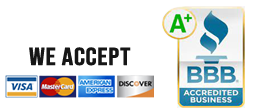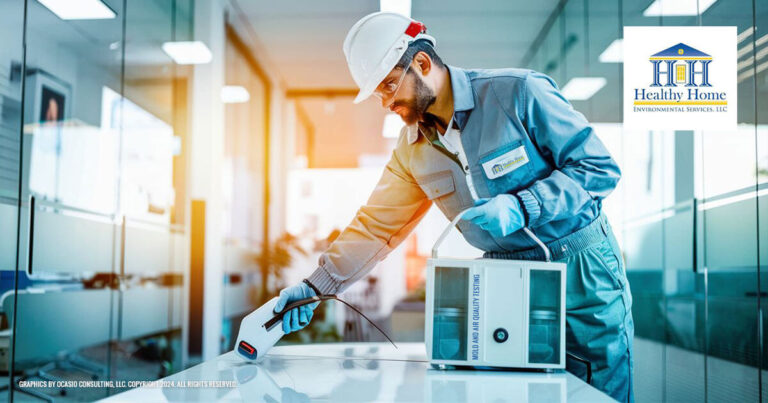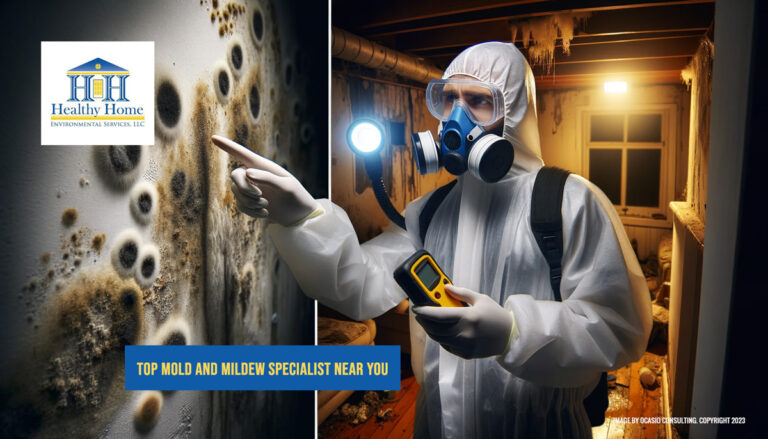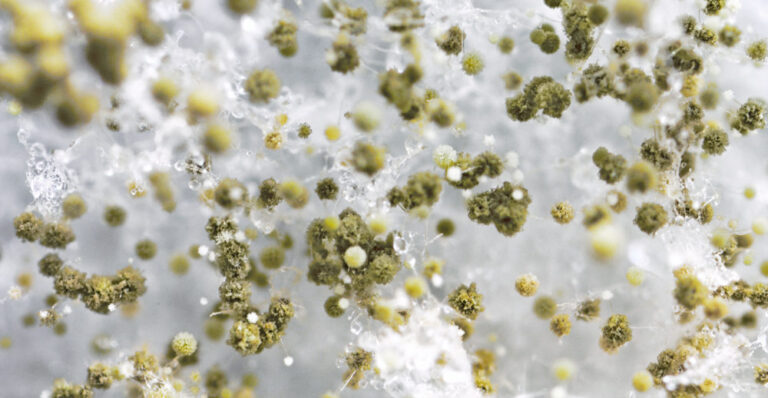Expert Home Inspector’s Comprehensive Guide on Mold Inspection & Detection

Introduction
In this comprehensive guide, we will provide you with all the information you need to know about mold inspection and detection. From understanding the role of a home inspector for mold to uncovering the process of a thorough mold inspection, we will cover everything you need to know to ensure a mold-free home.
We will also discuss the importance of hiring a certified mold inspector for a professional mold assessment, as well as the benefits of mold detection services and mold remediation specialists.
By the end of this guide, you will know how to make informed decisions about protecting your home from mold.
Key Takeaways:
- Understanding the role of a home inspector for mold is crucial in maintaining a mold-free home environment.
- Hiring a certified mold inspector ensures a professional mold assessment and thorough inspection process.
- Mold detection services and mold remediation specialists play a vital role in identifying and addressing mold issues in your home.
- Regular mold inspection and testing are essential for preventing mold growth and ensuring the well-being of your family.
- Choosing the right mold inspector and testing services is key to obtaining accurate and comprehensive results.
Who Exactly is a Mold Inspector and What Do They Do?

A mold inspector is a trained professional who specializes in inspecting homes and buildings for the presence of mold. Their primary role is to assess the property and identify any areas affected by mold growth. Mold inspectors play a crucial role in ensuring the safety and well-being of homeowners by identifying and addressing potential mold issues.
Understanding the Role of a Mold Inspector
A mold inspector’s main responsibility is to conduct thorough inspections of properties to assess the presence of mold. They use their expertise and specialized tools to identify areas where mold is likely to grow, such as damp basements, crawl spaces, or areas with water damage. Mold inspectors also collect samples for further analysis to determine the type and concentration of mold present.
Skills and Qualifications of a Mold Inspector
To become a mold inspector, individuals must acquire specific skills and qualifications. They undergo comprehensive training to understand mold growth patterns, identification techniques, and remediation protocols. Mold inspectors must also have a strong knowledge of building construction, moisture control measures, and the health effects related to mold exposure.
Home Inspectors vs. Mold Inspectors: The Differences
While both home inspectors and mold inspectors play essential roles in evaluating properties, there are significant differences between the two professions. Home inspectors focus on assessing the overall condition of a property, including its structure, systems, and components. In contrast, mold inspectors specialize in the detection and identification of mold growth specifically.
What to Expect When You Hire a Mold Inspector
When you hire a mold inspector, they will conduct a comprehensive visual inspection of your property, checking for signs of mold growth, water damage, and moisture issues. They may also collect samples for laboratory testing to determine the presence and type of mold. After the inspection, the mold inspector will provide you with a detailed report outlining their findings, recommendations, and potential remediation steps.
Why a Home Inspector Should Check for Mold
Home inspectors need to include mold inspection in their services, especially when buying a house. Mold in a home can pose serious health risks and potential structural damage. By checking for mold during a home inspection, home inspectors can alert buyers to any potential mold issues and help them make informed decisions about their purchase. This can prevent costly remediation efforts and ensure the safety of the occupants.
Uncovering the Process of a Thorough Mold Inspection

The Basics of a Mold Inspection
A mold inspection is a comprehensive assessment of a property to identify the presence of mold and determine the extent of mold contamination. It involves a thorough examination of both visible and hidden areas to detect mold growth and assess potential health risks.
During a mold inspection, a certified mold inspector will examine areas such as the basement, crawl spaces, attics, and indoor air systems. They will also inspect areas where moisture and humidity are likely to be present, such as bathrooms, kitchens, and laundry rooms.
Tools Used in a Mold Inspection
A mold inspection requires the use of specialized tools and equipment to accurately identify and assess mold growth. Some of the commonly used tools during a mold inspection include:
- Moisture meter: A moisture meter is used to measure the moisture content in various materials. High moisture levels indicate potential areas for mold growth.
- Thermal imaging camera: This tool helps identify hidden moisture sources behind walls, ceilings, and floors by detecting temperature variations.
- Air sampling equipment: Air samples are collected to determine the concentration of mold spores in the indoor air. This helps assess the overall air quality and identify hidden mold growth.
Visual Inspection vs. Sampling: An In-depth Look
During a mold inspection, both visual inspections and sampling techniques are utilized to identify mold growth and assess its impact on indoor air quality. Visual inspections involve a thorough examination of visible areas for signs of mold, such as discoloration, stains, or visible mold growth.
Sampling techniques, on the other hand, involve collecting samples from the air or surfaces to be analyzed by a laboratory. This helps determine the type and concentration of mold present. Air sample testing, in particular, can identify the presence of mold spores in the indoor air, even in areas where mold growth is not visible.
Understanding Air Sample Testing for Mold
Air sample testing is a crucial aspect of mold inspection as it provides valuable information about the overall air quality and the presence of mold spores. During air sample testing, a mold inspector will use specialized equipment to collect samples from different areas of the property, including both indoor and outdoor environments.
The samples are then sent to a laboratory for analysis. The laboratory will analyze the samples to determine the concentration and types of mold spores present. This information helps determine the severity of the mold problem and guides the mold remediation process.
Ins and Outs of a Moisture Meter Check in Detecting Mold
A moisture meter is an essential tool in mold inspection as it helps detect moisture levels in different materials, such as walls, ceilings, and floors. Excess moisture provides favorable conditions for mold growth, so measuring moisture levels is crucial in identifying areas prone to mold infestation.
During a mold inspection, a moisture meter is used to assess the moisture content in various materials. High moisture readings indicate potential areas of mold growth or water damage. By identifying these areas, a mold inspector can recommend appropriate measures to prevent further mold growth and address the underlying moisture issues.
How Much Does a Mold Inspection Cost? An Overview

In this section, we will provide an overview of the cost of mold inspection. Understanding the expenses involved in hiring a mold inspector is crucial for homeowners who suspect mold issues or are considering purchasing a property. By knowing the factors that determine the cost and the potential risks of ignoring a mold problem, you can make an informed decision and avoid significant financial burdens in the long run.
Essential Factors that Determine a Mold Inspection Cost
The cost of a mold inspection can vary depending on several key factors. These include:
- The size of the property: Larger properties may require more time and resources to inspect thoroughly, which can affect the overall cost.
- The extent of the mold problem: If the suspected mold issue is widespread or affects multiple systems and components of the property, the inspection may require more comprehensive testing and evaluation.
- The location of the property: Mold inspection costs can vary based on geographic location, as different regions may have varying rates.
- The complexity of the inspection: Some properties may have unique characteristics or specific requirements that can impact the cost of the inspection.
It’s important to consider these factors when budgeting for a mold inspection, as they can influence the overall cost and scope of the inspection process.
Why Investing in Mold Inspection is Beneficial for a Homeowner
While the cost of mold inspection may seem like an additional expense, the benefits of investing in professional mold assessment far outweigh the financial implications. Getting a mold inspection can:
- Identify potential mold issues that may be hidden or not easily detectable, allowing you to address them proactively and prevent further damage to your property.
- Provide you with peace of mind and assurance that your home is safe and free from harmful mold growth.
- Enable you to negotiate with the seller if mold issues are discovered during a pre-purchase inspection, potentially saving you thousands of dollars in repair costs.
By investing in mold inspection, you can take proactive measures to protect your home and the health of your family, ensuring a safe living environment.
How Can a Mold Inspection Save You Money in the Long Term
A mold inspection can save you money in the long term by:
- Identifying and addressing mold issues early on, preventing them from spreading and causing significant damage to your property.
- Helping you negotiate with the seller if mold issues are discovered during a pre-purchase inspection, potentially reducing the purchase price or requiring the seller to address the mold problem before finalizing the sale.
- Avoid costly remediation expenses that may arise from ignoring a mold problem. Mold remediation can involve extensive repairs, removal of contaminated materials, and the need for professional remediation services.
By investing in a mold inspection, you can save yourself from potential financial burdens associated with extensive mold damage and remediation.
The Price of Ignoring a Mold Problem: Potential Costs and Risks
Ignoring a mold problem can have serious financial and health consequences. Some potential costs and risks of neglecting mold issues include:
- Structural damage: Mold can cause deterioration to building materials and compromise the structural integrity of your property, leading to costly repairs.
- Health issues: Mold can trigger allergies, respiratory problems, and other health issues, requiring medical attention and increasing healthcare expenses.
- Decreased property value: The presence of mold can significantly reduce the value of your property, making it difficult to sell or affecting its marketability.
- Legal implications: If mold issues are not disclosed to future buyers, it can lead to legal disputes and potential financial liabilities.
Understanding the potential costs and risks of ignoring mold problems emphasizes the importance of investing in mold inspection and taking prompt action to address any issues that arise.
Extra Costs: When a Simple Mold Test Turns into a Mold Remediation
In some cases, a simple mold test may uncover a more significant mold problem that requires professional remediation. When a mold test turns into a mold remediation project, additional costs may arise, such as:
- Removal and disposal of contaminated materials, including drywall, carpeting, insulation, or other affected building components.
- Repair or replacement of damaged structures and systems, such as HVAC systems or plumbing.
- Professional mold remediation services, which may involve containment, HEPA filtration, and specialized cleaning techniques.
An Overview of Mold Inspection Costs
| Type of Service | Average Cost Range |
|---|---|
| Standard Mold Inspection | $250 – $500+ (depending on area) |
| Air Testing for Mold | $300 – $600+ (depending on area) |
| Surface Sampling | $200 – $400+ (depending on area) |
| Comprehensive Mold Inspection with Testing | $500 – $1,000+ (depending on area) |
| Mold Remediation Project | Varies based on the extent of the problem and the complexity of the project |
Keep in mind that these are average cost ranges, and prices can vary depending on several factors. It’s essential to consult with a reputable mold inspector to get an accurate estimate based on your specific needs and the condition of your property.
Effective Ways to Prevent Mold Growth in Your Home

To create a mold-free environment in your home, it’s important to implement effective prevention techniques. By taking proactive measures, you can prevent mold growth and maintain a healthy living space. In this section, we will explore various techniques to prevent mold proliferation, including proper ventilation, regular home inspection, the role of dehumidifiers and air quality tools, and how to check for signs of mold.
Exploring Various Techniques to Prevent Mold Proliferation
Preventing mold growth starts with understanding the conditions that facilitate its proliferation. Here are some techniques to keep in mind:
- Keep humidity levels in check by using dehumidifiers and ensuring proper ventilation.
- Fix any water leaks promptly to prevent moisture buildup.
- Ensure proper insulation in your home to prevent condensation.
- Use mold-resistant materials in areas prone to moisture, such as bathrooms and basements.
Why Proper Ventilation is Key in Preventing Mold Growth
Proper ventilation plays a vital role in preventing mold growth. By allowing fresh air to circulate and removing excess moisture, you can create an environment that inhibits mold proliferation. Good ventilation practices include:
- Using exhaust fans in bathrooms and kitchens to remove steam and moisture.
- Opening windows and doors to allow fresh air to circulate throughout the house.
- Ensuring proper airflow in crawl spaces and attics.
How Regular Home Inspection Helps in Preventing Mold
Regular home inspections are crucial for early detection and prevention of mold growth. Consider the following points:
- Perform routine inspections in areas prone to moisture, such as basements, bathrooms, and kitchens.
- Check for any signs of water damage, leaks, or condensation.
- Address any issues promptly to prevent mold from proliferating.
The Role of Dehumidifiers And Air Quality Tools in Mold Prevention
Dehumidifiers and air quality tools are essential in maintaining optimal humidity levels and preventing mold growth. Here’s what you need to know:
- Use dehumidifiers in areas with high moisture levels, such as basements and bathrooms.
- Ensure proper maintenance and regular emptying of dehumidifier water buckets.
- Consider using air purifiers with HEPA filters to remove mold spores from the air.
How to Check for Signs of Mold to Prevent Serious Mold Issues
Regularly checking for signs of mold can help you identify and address mold problems before they become serious. Follow these steps:
- Inspect areas prone to mold, including dark and damp spaces.
- Look for visible mold growth or any musty odors.
- Pay attention to allergic reactions or respiratory issues that could be caused by mold exposure.
By incorporating these effective prevention techniques into your home maintenance routine, you can prevent mold growth and maintain a healthy living environment for you and your family.
How to Choose the Right Mold Inspector and Testing Services

In this section, we will guide you on how to choose the right mold inspector and testing services. It is crucial to select a qualified and experienced professional to ensure an accurate assessment of your property’s mold situation.
Key Traits to Look for in a Mold Inspector
When searching for a mold inspector, keep the following key traits in mind:
- Experience: Look for a mold inspector with several years of experience in the field. Experienced inspectors are more likely to identify potential mold issues and provide effective solutions.
- Knowledge: Ensure that the mold inspector is well-versed in mold detection techniques, building materials, and potential mold sources.
- Professionalism: A professional mold inspector should exhibit excellent communication skills, attention to detail, and a commitment to providing quality service.
Importance of Proper Certification in a Mold Inspector
Proper certification is crucial when choosing a mold inspector. Certified mold inspectors have undergone comprehensive training and adhere to industry standards. Look for certifications such as the Certified Mold Inspector (CMI) or Certified Indoor Environmentalist (CIE), which demonstrate the inspector’s expertise and credibility.
The Pathway to Performing a Properly Informed Mold Inspection
Performing a properly informed mold inspection involves a systematic approach to detect mold issues accurately. A qualified mold inspector will follow these essential steps:
- Thorough visual inspection: The mold inspector will carefully examine your property, identifying visible signs of mold growth and areas prone to mold infestation.
- Sampling and testing: If necessary, the inspector may collect samples from suspected mold areas and send them to a reputable laboratory for analysis.
- Moisture assessment: Moisture is a crucial factor in mold growth. The inspector will check for signs of water damage, leaks, and high humidity levels.
- Report generation: The mold inspector will provide you with a detailed report outlining their findings, including the extent of mold growth and recommended actions.
Understanding the Importance of Comprehensive Mold Testing and Reporting
Comprehensive mold testing is vital to ensure an accurate assessment of your property’s mold situation. It involves a combination of visual inspection, sampling, and moisture assessment. A thorough mold inspection can uncover hidden mold issues and provide valuable insights for effective remediation.
Reporting is another essential aspect of mold inspection. The inspector should provide you with a comprehensive report that outlines their findings, including the extent of mold growth, potential health risks, and recommended actions. The report should be clear, detailed, and easy to understand, empowering you to make informed decisions regarding necessary remediation measures.
Buyer Beware: Avoiding the Pitfalls when Hiring a Mold Inspector
When hiring a mold inspector, it is crucial to exercise caution and be aware of potential pitfalls. Here are some tips to avoid common mistakes:
- Research: Take the time to research and verify the credentials and reputation of the mold inspector. Look for online reviews, testimonials, and certifications to ensure their credibility.
- Get multiple quotes: Obtain quotes from several mold inspectors to compare prices and services. Remember, the cheapest option may not always be the best.
- Ask for references: Request references from previous clients to gauge the inspector’s level of expertise, professionalism, and customer satisfaction.
- Verify insurance: Ensure that the mold inspector has liability insurance to protect you in case of any damage or incidents during the inspection process.
Choosing the right mold inspector and testing services is crucial for a thorough and accurate assessment of your property’s mold situation. By considering key traits, proper certification, and the importance of comprehensive mold testing and reporting, you can make an informed decision and avoid potential pitfalls. Your home’s safety and your family’s well-being depend on it.
Conclusion
In conclusion, mold inspection and detection play a crucial role in maintaining a healthy and mold-free home. By understanding the role of a mold inspector and the process of a thorough mold inspection, you can make informed decisions to protect your home and ensure the well-being of your family.
Choosing the right mold inspector and testing services is fundamental to obtaining accurate and comprehensive results. It is essential to look for key traits such as experience, knowledge, and professionalism when selecting a mold inspector. Additionally, ensuring that the inspector has proper certification will give you confidence in their abilities.
By taking proactive measures such as implementing effective mold prevention techniques and conducting regular home inspections, you can minimize the risk of mold growth. Proper ventilation, the use of dehumidifiers, and checking for signs of mold are all important aspects of preventing serious mold issues.
Remember, mold can be harmful to both your health and the structural integrity of your home. However, with the right knowledge and actions, you can create a safe and mold-free living environment for you and your family.
Protect your home with Dana and Sally Aikin at Healthy Home Environmental Services – Your trusted experts for affordable, thorough mold home inspections. Click to safeguard your residence now!
FAQs
Q: How can I inspect for mold in my house?
A: Start by inspecting areas that are prone to mold growth, such as bathrooms, kitchens, basements or any area where there is or has been water leakage. Mold needs moisture to grow, so any space that’s damp is a potential home for mold. You can also employ a certified home inspector to get inspection and testing carried out. These inspectors use specialized equipment to find mold that may not be visible to the naked eye.
Q: How does a home inspector check for mold during a mold inspection and testing?
A: Home inspectors check for mold by performing a thorough walkthrough of the property, looking for visible signs of mold, water damage or moisture issues. They may also use tools like moisture meters and infrared cameras to check for hidden issues. If mold is detected, they may suggest further testing with a professional mold specialist or test kit.
Q: What is the process to get mold testing done?
A: There are DIY mold testing kits available, but the full and accurate picture can only be obtained by using a certified mold inspector. The mold inspection process involves a thorough evaluation of the property in question, followed by sample collection if mold is suspected. The samples are then sent off to a certified lab for analysis, and a detailed inspection report is generated explaining the findings.
Q: Why is it important to inspect for mold when I am a home buyer?
A: Inspecting for mold is a critical part of the home-buying process. Mold can lead to serious health issues and expensive repairs if not addressed promptly. Hence, as a prospective home buyer, it’s important to make sure that the house is not just aesthetically pleasing, but also safe, healthy, and free from issues like mold.
Q: Can I see mold if it’s present in my home?
A: While some molds might be visible as a dirty black or green patch, other types of mold might be hidden under the surfaces and can’t be easily seen. That’s why it’s important to hire an expert for a thorough mold inspection and testing if you suspect there’s mold in your house.
Q: How much would it cost to inspect for mold?
A: The cost of a mold inspection can vary considerably depending on the size of the house. Some professionals charge a flat fee, while others charge based on the square footage. Usually, prices range from $150-$800 but it can go higher for larger properties.
Q: What happens if mold is detected in my home during a mold inspection and testing?
A: If mold is detected in your home, the inspector will provide you with a detailed report, explaining the type of mold, its location, and severity. Based on the findings, you may require mold removal services from a certified professional to ensure that your home is safe for living.
Q: Can mold grow back after mold removal?
A: Yes, mold can grow back if the conditions that led to mold growth, such as moisture or poor ventilation, are not corrected. You may need to make changes to your home such as improving ventilation or fixing leaks to prevent future mold growth.
Q: How do I become certified as a mold inspector?
A: To be certified as a mold inspector, you’ll need to take a course from a certified training provider, and learn about proper mold inspection techniques, use of equipment, and safety measures. After completing the course, you’ll have to pass an exam to receive your certification.
Q: What are the signs that mold may be growing in my home?
A: Signs of mold growth encompass visible mold patches, musty smells, and unexplained health symptoms like allergies or respiratory issues. Additionally, signs of moisture problems, such as leaks or standing water, could indicate potential mold growth. A professional mold inspection can help confirm if mold is present in your home.







